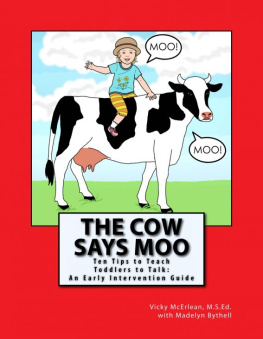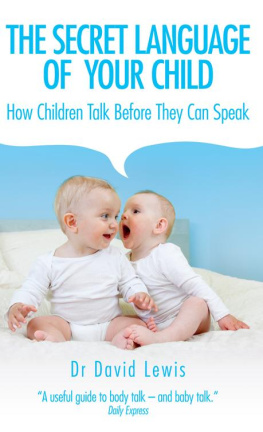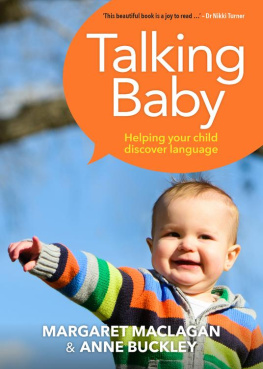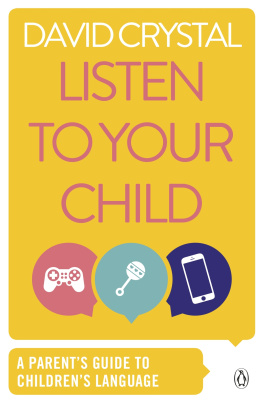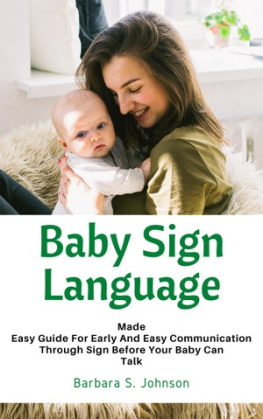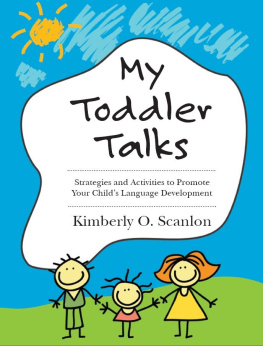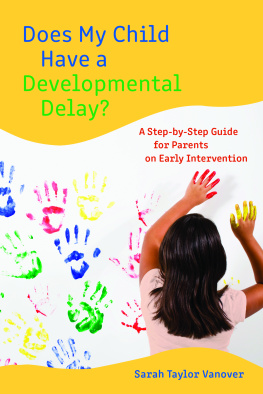The Cow Says Moo The Cow Says Moo **************************** Ten Tips to Teach Toddlersto Talk: An Early InterventionGuide ***************************** By Vicky McErlean , MS Ed With MadelynBythell Cover Illustrated byAbigail Bythell Copyright 2013 Vicky McErlean and Madelyn Bythell SmashwordsEdition Smashwords Edition, License Notes This ebook is licensed for yourpersonal enjoyment only. This ebook may not be re-sold or givenaway to other people. If you would like to share this book withanother person, please purchase an additional copy for eachrecipient. If youre reading this book and did not purchase it, orit was not purchased for your use only, then please return it andpurchase your own copy. Thank you for respecting the hard work ofthis author. with MadelynBythell
About the Authors
Vicky McErlean has a Master of Science in Education. with MadelynBythell
About the Authors
Vicky McErlean has a Master of Science in Education.
She iscertified in the areas of early childhood education, elementaryeducation, and special education, and is pursuing certification asa Board Certified Behavior Analyst. She has worked as anindependent consultant, providing home-based special instruction tochildren from diverse backgrounds and with various impairments anddevelopmental delays. In her current employment, Ms. McErlean oftenidentifies and refers children with speech and language disorders,cognitive impairment, sensory integration dysfunction, and autisticspectrum disorder. She consults and co-treats with otherprofessionals in the field of early intervention, includingoccupational therapists, speech and language pathologists, andmedical professionals. As an early-intervention provider, she hasreceived numerous commendations from the families she hasserved.
Madelyn Bythell has been a professional technical communicatorfor more than 25 years. She currently works for a major softwarecompany. ~~~~~~ T able of Contents ~~~~~~
Children generally begin using words on the followingschedule: At 6 months:Babble At 9 months: Uses fourdifferent syllables (such as ba , ma , da , na ); can combine two syllables (suchas mama or baba ) At 12 months: Says one ortwo words spontaneously; says mama and dada specifically At 15 months: Has aspontaneous vocabulary of about 10 words At 18 months: Has 15meaningful words At 21 months: Canimitate two and three word phrases (such as uh oh , oh no );can use single-word sentences At 21 months: Canimitate two and three word phrases (such as uh oh , oh no );can use single-word sentences At 2 years: Has about 50words; begins to use pronouns (I, you, me At 2.5 years: Usesthree-word sentences; can give their full name whenasked At 3 years: Can relatepersonal experiences; can converse in sentences (4+ words); cananswer "what," "where," and "who" questions; has a vocabulary of atleast 200 words Most children learn tospeak on their own without direct assistance. Even children who areslow to speak early on typically catch up to their peers by the ageof three. Unfortunately, there is no way for parents, educators, orhealth-care professionals to know in advance which children willcatch up and which children will not.
About This Book
Fortunately, parents caneasily be proactive by using this book as a teaching tool and guideto helping toddlers develop their language skills.
Tip 1: Do What Does Not ComeNaturally shows you how to give your childa reason to talk. Tip 2: Juice or Milk? explains how to provide your child with moreopportunities to expand his language skills. Tip 3: Simple Signs explains how you can use sign language to helpyour child make the connection that language has apurpose. Tip 4: Be Silly shows you how to incorporate silliness intoeveryday situations in order to promote listeningskills. Tip 5: Talk It Out! explains how verbalizing your own actions andthose of your child expose your child to different aspects oflanguage, speech, and communication. Tip 6: Keep It Moving! explains how you can use oral motor exercises inorder to help your child practicethe mouth movements that are vital for speech.
Tip 7: The Cow Says Moo shows you how to help your child find the rightword. Tip 8: Break It Down shows you how to break words down into smallercomponents so that your child can communicate moreeffectively. Tip 9: Get Your Groove On shows you how to pair movement with sound inorder to help your child learn language through a sensation otherthan sound. Tip 10: Books, Books, and MoreBooks shows you how to incorporate booksinto your strategy for encouraging language development.
While Using This Guide
Keep in mind that yourchilds response depends on skills in all areas of development.Speech does not develop in isolation. It is influenced by motor,social, emotional, adaptive, and cognitive development.
Moreover,not all techniques are effective for all children. Dont bediscouraged if your child fails to respond to a particulartechnique. He might need more time or a different technique mightbe better suited for his developmental skills.
What This Book Is Not
This book does not replacetherapeutic or medical treatment. If you are concerned about yourchilds development, consult with your pediatrician, neurologist,audiologist, or other specialist.
Safety Notice
I cannot stress enough theimportance of ensuring your childs safety.
Safety Notice
I cannot stress enough theimportance of ensuring your childs safety.
Some of the techniquesdescribed throughout this book suggest the use of small objectsthat can be choking hazards. In rare cases, your child might evenbe sensitive or even allergic to a suggested product. For thesereasons, you must remain in control of the activity at alltimes.
You Are Not Alone
This guide empowers you tohelp your child. The exercises should not create unduestress . Praise your childs efforts tocommunicate, no matter how slight.
Hisemotional development is just as important as any other skill. Ifyou feel discouraged at a perceived lack of progress, seekadditional assistance from a health-care professional.
Not Just for Parents
This guide is designedprimarily for use by parents, but it can also be an effectiveresource tool for use by other family members, teachers, childcareproviders, and health-care professionals. ~~~~~~
Do not handicap your children bymaking their lives easy. Robert A. Heinlein
A t a holiday party several yearsago, my sister was holding her daughter on her lap.
When someoneasked how old my niece was, my sister responded, Eighteen months.When the woman said Oh, not a baby anymore then, my sister gaspedaloud, never having considered that her daughter was no longer ababy. In fact,children transition relatively quickly from infant to toddler. So,that tiny little being who was completely dependent on you for herevery need is now quite capable of making her desires known throughactions, gestures, and words. If yourchild is not yet using words to communicate, consider that you might not have madethe same transition. You might still be doing what has becomesecond natureanticipating her needs. Unfortunately, this behaviorcan hinder language development in a toddler.
So, tipnumber one is this: Do what does not come naturally. Stopanticipating your childs needs. Give your child a reason totalk.
Example
During mealtime, eighteen-month-oldKaylas mother puts only a small amount of a favorite food onKaylas plate. Kayla eats the small portion of food but does notattempt to communicate that she would like more. -Kayla eats the small portion offood and then attempts to communicate that she wants more bypointing or gesturing, but she does not vocalize. -Kayla eats the small portion offood, and then has a screaming tantrum to indicate that she wantsmore. -Kayla eats the small portion offood, and then has a screaming tantrum to indicate that she wantsmore.
Next page
